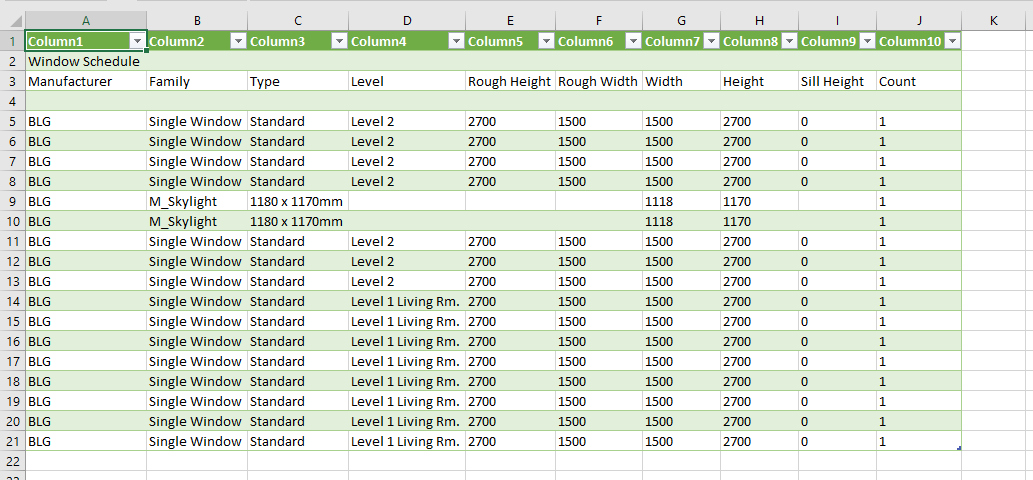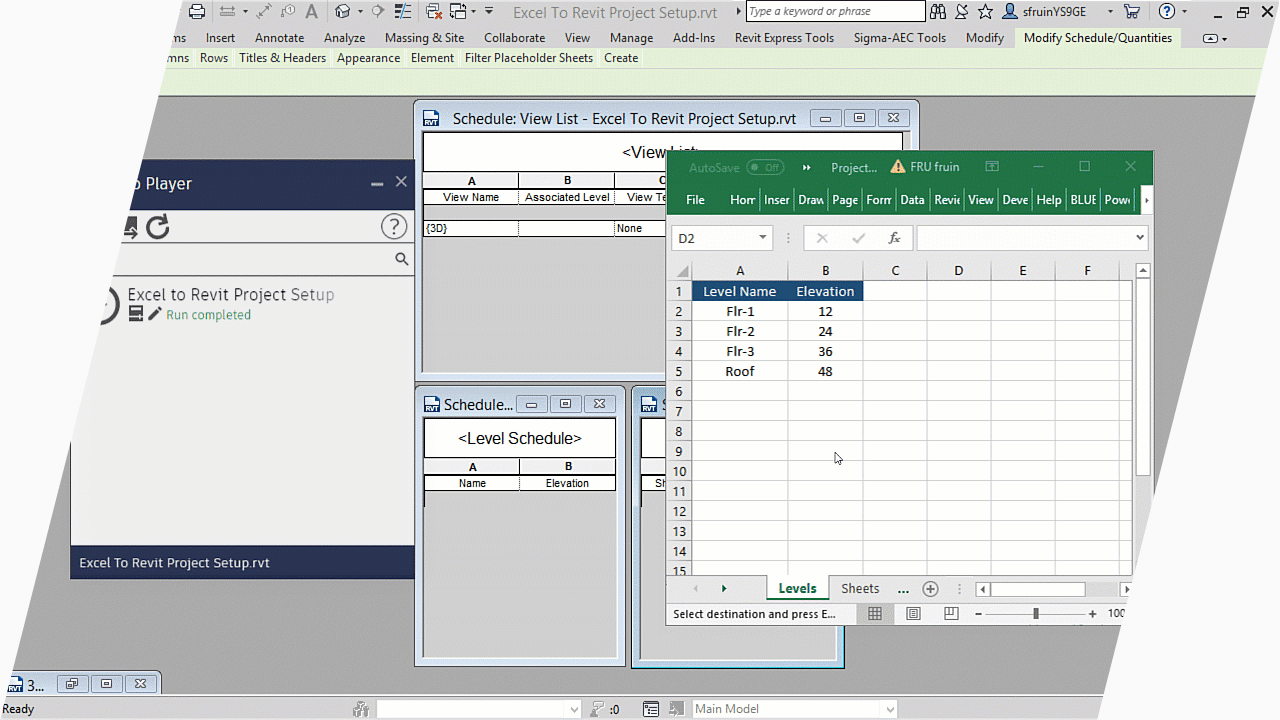Raise Your Style Game with Important Revit Add Ins
Wiki Article
Excel-to-Revit: A Game-Changing Workflow for Architectural Design - Introducing the Keys
Presenting excel-to-revit, the game-changing workflow that will certainly reinvent your style procedure. With excel-to-revit assimilation, you can enhance your architectural style, unlock efficiency, and make the most of collaboration within your group. Obtain all set to take your building design to the next degree with excel-to-revit!The Power of Excel-to-Revit Integration

Think of the benefit of having the ability to edit and upgrade project information in Excel, and instantaneously see those adjustments reflected in your Revit model. Say goodbye to manual information entrance or laborious updates. With Excel-to-Revit combination, you can save time and minimize mistakes by leveraging the power of Excel's functions and solutions to immediately generate exact information in Revit.
Not only does this combination improve performance, however it also boosts partnership among employee. You can quickly share Excel data with coworkers, who can after that import the data right into their Revit models. This promotes a smooth exchange of information and makes certain that everybody is functioning with the most updated data.

Enhancing Architectural Style With Excel-To-Revit
Streamlining building design is made much easier with the use of Excel-to-Revit (revit plugins). With this effective integration, you can maximize your workflow and conserve valuable time throughout the style procedure. By leveraging the capabilities of Excel and Revit, you can effortlessly move information in between the two systems, removing the need for hands-on information entry and lowering the risk of errorsExcel-to-Revit permits you to import and export data effortlessly, allowing you to conveniently update and customize your building layouts. You can produce schedules, determine amounts, and create reports in Excel, and afterwards transfer that data straight right into your Revit model. This integration makes sure that your design info is constantly current and integrated, removing the demand for hands-on updates and minimizing the opportunities of disparities.
By using Excel-to-Revit, you can likewise make the most of the effective computational abilities of Excel. You can do intricate estimations, evaluate information, and automate repetitive jobs, all within Excel. After that, with just a couple of clicks, you can import the results back into Revit, permitting you to make enlightened layout decisions and optimize your building designs.
Opening Efficiency: Checking Out the Excel-to-Revit Workflow
Optimize your performance by flawlessly incorporating Excel and Revit for a more reliable workflow. With the Excel-to-Revit process, you can open a whole brand-new degree of performance in your architectural style process. By making use of the power of Excel's information monitoring capacities and combining it with the adaptability and precision of Revit, you can improve your style procedure and save important time.Among the crucial benefits of this integration is the capacity to import and export information in between Excel and Revit. This indicates that you can easily transfer job info, such as space timetables or material quantities, from one software application to the other, eliminating the requirement for hand-operated data entry and decreasing the opportunities of mistakes. You can likewise produce customized solutions and estimations in Excel to automate repeated jobs and do intricate calculations, which can after that be seamlessly integrated into your Revit models.
Furthermore, the Excel-to-Revit process allows for far better coordination and partnership between group participants. With Excel functioning as a main data center, multiple employee can service various elements of the task simultaneously, upgrading and sharing information in real-time. This not just boosts communication however additionally guarantees that every person is collaborating with the most current information, removing the danger of incongruities.
Maximizing Collaboration: Excel-to-Revit for Architectural Teams
By perfectly integrating Excel and Revit, architectural teams can significantly improve collaboration and accomplish much more efficient layout end results. When utilizing this effective workflow, you can easily transfer information in between Excel spread sheets and Revit versions, streamlining the design process and enhancing communication amongst group participants. With Excel-to-Revit assimilation, go to the website you can easily import task information, such as area timetables, product amounts, and task parameters, directly into Revit, eliminating the need for manual data entry and decreasing the chances of errors. This seamless link permits for real-time updates, ensuring that every person is dealing with the most current details and staying clear of disparities in between various files.In addition, by leveraging Excel's effective computation capabilities, you can execute complicated calculations and analysis on your layout data, providing beneficial insights and driving educated decision-making. This combination also allows you to export data from Revit to Excel, enabling you to produce comprehensive records, charts, and charts for presentations and evaluation. This collective operations promotes reliable communication and control among group members, as Excel acts as a main center for data monitoring and sharing.
General, by welcoming the Excel-to-Revit process, building teams can accomplish greater levels of partnership, effectiveness, and precision in their design procedure. revit plugins. This combination empowers groups to more info here interact perfectly, ensuring that everybody gets on the same page and contributing to the success of the task
Revealing the Keys of Excel-to-Revit Integration

One of the secrets of Excel-to-Revit combination is the ability to utilize the power of formulas and calculations in Excel to drive criteria and generate complex geometries in Revit. You can connect Excel spreadsheets to Revit family members, allowing you to input data directly into the spread sheet and have it immediately update in the Revit design. This simplifies the style process and makes sure precision and uniformity throughout the job.
One more secret is the ability to develop custom-made routines and records in Excel, making use of data extracted from Revit. This permits you to examine and envision project information in such a way that is not possible within Revit alone. You Discover More can easily generate amount liftoffs, price price quotes, and task timelines, giving beneficial understandings for decision-making and task management.
Additionally, Excel-to-Revit assimilation makes it possible for reliable cooperation among employee. Multiple customers can function on the exact same Excel spreadsheet at the same time, making it less complicated to work with and track adjustments. You can likewise use Excel's commenting feature to give responses or interact design revisions.
Final Thought
By incorporating the power of Excel and Revit, designers can currently function extra successfully, conserve time, and create much better styles. Begin incorporating excel-to-revit integration right into your building style process today and transform the way you work.With just a few clicks, you can import the outcomes back right into Revit, enabling you to make informed layout choices and enhance your architectural designs.
By utilizing the power of Excel's data management capacities and integrating it with the adaptability and accuracy of Revit, you can enhance your design procedure and conserve important time.
By seamlessly incorporating Excel and Revit, architectural teams can greatly boost partnership and achieve a lot more effective style outcomes. When utilizing this powerful operations, you can quickly transfer information between Excel spread sheets and Revit designs, streamlining the style process and boosting communication amongst team members.In addition, by leveraging Excel's powerful estimation abilities, you can execute complicated estimations and analysis on your layout data, supplying important understandings and driving notified decision-making.
Report this wiki page